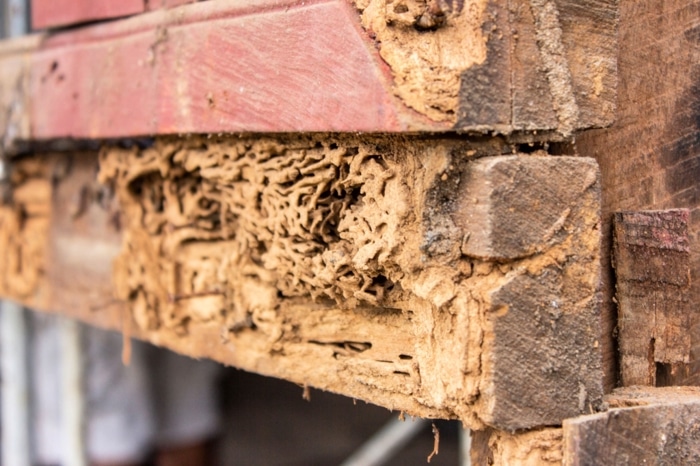Pest inspections might not be the first thing on your mind when you think about home maintenance, but they are crucial in keeping your living space safe and sound.
These inspections are all about catching problems before they become serious—imagine finding out you have termites before they’ve done significant damage, or catching a rodent problem as it starts. This guide will walk you through what pest inspections are, why they’re important, and how they can protect not just your home but also your health.
A pest inspection involves a professional examining your home to check for all kinds of pests, from insects like termites and bed bugs to rodents like mice and rats. These experts use their skills to spot early signs of infestations, helping you tackle these issues before they grow out of control. Regular inspections can help you avoid the high costs and headaches associated with major infestations.
What is a Pest Inspection?
A pest inspection is a thorough check of your home, conducted by a trained inspector who knows exactly what signs to look for and where pests are most likely to hide. During an inspection, the inspector will examine both the interior and exterior of your home, focusing on areas like basements, attics, and other entry points that pests might use. They’re looking for any evidence of pest activity, including droppings, nests, damage to wood or fabrics, and live or dead pests.
The tools used in these inspections vary, but they often include flashlights, ladders for checking high-up or hard-to-see areas, and sometimes more advanced technology like moisture meters or thermal imaging devices. These tools help inspectors pinpoint problems that aren’t visible to the naked eye, such as moisture that might attract pests or heat signatures behind walls that indicate a nest.
Benefits of Regular Pest Inspections
Scheduling regular pest inspections comes with a host of benefits. Firstly, it’s a proactive measure that can save you a lot of money in the long run. Dealing with pests early on can prevent damage to the structure of your home, which might be costly to repair if left unchecked. For instance, termites alone cause billions of dollars in damage to homes in the United States each year, damage that can be minimized or avoided with regular inspections and early treatment.
Health is another major concern when it comes to pests. Many pests, like rodents, cockroaches, and mosquitoes, can carry diseases that are harmful to humans. Rodents can carry hantavirus, salmonella, and even bubonic plague, while cockroaches can exacerbate asthma and allergies. Regular inspections help to keep these pests out of your home, reducing the risk of disease.
Moreover, knowing your home is free from pests provides peace of mind. It’s comforting to know that your home, your sanctuary, is safe and secure from the disruptions and discomfort caused by pests. Regular inspections mean regular confirmations that your home is in good shape, letting you relax more and worry less about the hidden problems that could be lurking in unseen corners.
How Long Does a Pest Inspection Take?

When planning for a pest inspection, one of the common questions homeowners have is about the time commitment. Typically, a thorough pest inspection can take anywhere from 1 to 3 hours, depending on several factors. The size of your home is one of the biggest determinants—obviously, a larger home with more ground to cover will take longer to inspect. Another factor is the accessibility of different areas within and around your home. If an inspector has easy access to the attic, basement, and crawl spaces, the process will be smoother and quicker. The complexity of the issue also plays a role; if there are signs of a severe infestation, the inspector might need extra time to assess the full extent of the problem.
The key here is that a comprehensive inspection should not be rushed. Each minute the inspector spends could be crucial in identifying potential or existing issues that might save you from future headaches. It’s important to be patient and allow the professional to do a thorough job.
Pest Control Inspection Process
Understanding the pest control inspection process can help homeowners prepare better and make the most of the service. The process typically starts with the inspector conducting a visual examination of all potential entry points into your home. This includes checking windows, doors, vents, and the foundation for cracks or gaps. The inspector also examines common pest breeding sites like kitchens, garages, basements, and attics, looking for signs of infestation such as droppings, nesting materials, and damage to wood or wires.
The inspector will also check the exterior of your property, which is just as important. This includes inspecting outbuildings, woodpiles, and trees close to the house that might serve as bridges for pests to enter. The goal is to identify not only active infestations but also potential risks that could lead to future problems.
Once the inspection is complete, the inspector provides a detailed report that outlines the findings. This report should explain any signs of pest activity, potential entry points for pests, and areas of concern that could attract pests in the future. Additionally, the inspector will recommend preventative measures or treatments to address any issues. This might include sealing up entry points, applying treatments to kill existing pests, or scheduling follow-up inspections to ensure that treatments have been effective.
How Much Does a Pest Inspection Cost?
The cost of a pest inspection can vary widely depending on your location, the size of your home, and the type of inspection you need. Generally, homeowners can expect to pay between $100 and $250 for a standard pest inspection. However, if you require a more specialized inspection—for example, if you suspect a termite infestation or if your home is large and complex—the cost could be higher.
Many pest control companies offer packages that include regular inspections and treatments, which can be a cost-effective option for ongoing pest management. It’s also worth considering that investing in a pest inspection can potentially save you money in the long run. By catching problems early, you can avoid more expensive extermination fees and repair costs for damage caused by pests.
When choosing a service, it’s important to ensure that you’re working with a qualified and reputable inspector. Cheaper isn’t always better, especially when it comes to protecting your home and health. Look for licensed professionals with good reviews and clear, upfront pricing to avoid any surprises.
Choosing the Right Insect Inspector
Selecting the right insect inspector is crucial to ensure that your home is thoroughly and accurately checked for pests. It’s important to choose someone who is not only skilled but also certified and experienced. Start by checking if they hold a valid license from a recognized pest control authority. This assures you that they meet the basic standards required for pest inspection and control.
Experience matters too. An experienced inspector will have a keener eye for signs of pest activity and will know the most effective methods for prevention and control. Look for reviews and testimonials from other homeowners to gauge their reputation. Positive feedback from previous clients can be a good indicator of reliability and effectiveness.
Another factor to consider is the range of services they offer. Ideally, your inspector should provide comprehensive services that include not just identification but also treatment and follow-up checks. This ensures a one-stop solution for all your pest control needs.
How Often Should You Schedule Pest Inspections?
The frequency of pest inspections can vary based on several factors, including the age and location of your home, and any past infestations. Generally, it is advisable to have a pest inspection at least once a year. This annual check-up can catch any new developments before they turn into serious problems.
However, if you live in an area prone to specific pests or if your home has a history of pest issues, you might need to schedule inspections more frequently. For instance, homes in areas with high termite activity might benefit from bi-annual inspections to prevent termite damage, which can be severe and costly to repair.
Preparing Your Home for a Pest Inspection
To get the most out of your pest inspection, it’s a good idea to prepare your home in advance. Make sure that the inspector has easy access to all areas of your home, including the attic, basement, and any crawl spaces. Remove any clutter that could obstruct the inspection, especially in areas where pests are likely to hide, like store rooms or garages.
It’s also helpful to list any particular areas of concern or signs of pests that you’ve noticed. Providing this information can help the inspector focus on potential problem areas and ensure a more thorough inspection.
Regular pest inspections are a key part of maintaining your home and protecting your health. They help identify potential pest problems early, saving you from costly repairs and health issues down the line. Remember, prevention is always better than cure, especially when it comes to pests.





